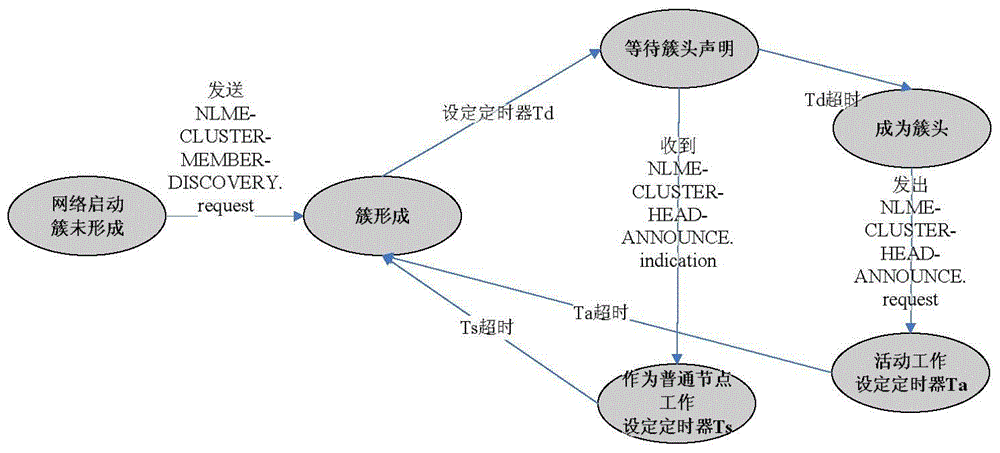Clustering multi-hop routing protocol of wireless sensor network
A wireless sensor, multi-hop routing technology, applied in network topology, wireless communication, advanced technology, etc., can solve problems such as unmaintained mobility
- Summary
- Abstract
- Description
- Claims
- Application Information
AI Technical Summary
Problems solved by technology
Method used
Image
Examples
Embodiment Construction
[0054] The present invention will be described in detail below in conjunction with the accompanying drawings and specific calculation examples.
[0055] The network model based on the present invention assumes that n sensor nodes are randomly and evenly distributed in a two-dimensional square area R of L×L, and assumes that the sensor network has the following properties:
[0056] 1) The sensor network is a high-density static network, that is, the nodes will not move after deployment;
[0057] 2) The wireless sensor network is deployed in a two-dimensional plane without obstacles;
[0058] 3) The sensor nodes have the same structure and have the same maximum transmission distance;
[0059] 4) The aggregation node is deployed at a fixed location, and the aggregation node is unique, located on the outer edge of the observation area, without energy constraints, and has relatively strong computing and storage capabilities;
[0060] 5) Battery powered, node energy cannot be repl...
PUM
 Login to View More
Login to View More Abstract
Description
Claims
Application Information
 Login to View More
Login to View More - R&D
- Intellectual Property
- Life Sciences
- Materials
- Tech Scout
- Unparalleled Data Quality
- Higher Quality Content
- 60% Fewer Hallucinations
Browse by: Latest US Patents, China's latest patents, Technical Efficacy Thesaurus, Application Domain, Technology Topic, Popular Technical Reports.
© 2025 PatSnap. All rights reserved.Legal|Privacy policy|Modern Slavery Act Transparency Statement|Sitemap|About US| Contact US: help@patsnap.com



